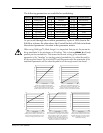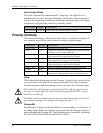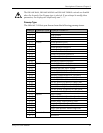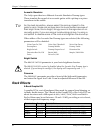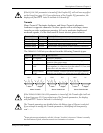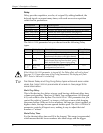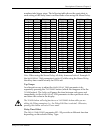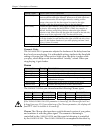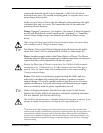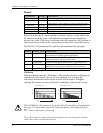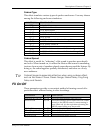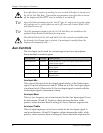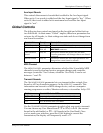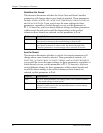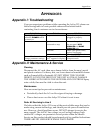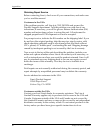
Description of Features: Chapter 3
AxSys 212 User Manual 33
causing the detuned signal to be re-detuned. CHORUS SHAPE selects
between a sine wave, for smooth sweeping pitch, or a square wave, for a
more abrupt shift in pitch.
In the case of a Stereo Chorus, the left channel is detuned sharp, the right
is detuned flat, and vice versa. This causes the effect to become more
pronounced and dramatic.
Flange. Flanging
3
produces a Òjet airplaneÓ-like sound. A delayed signal is
mixed with the original sound to produce the ÒswishingÓ or ÒtunnelingÓ
sound. Stereo Flange sweeps one channel up while the other sweeps
down.
When using the Flange type with the Square waveform shape, the Square shape
will actually provide a Triangle waveform shape.
TIP
The Stereo Chorus and Stereo Flange types will sound even wider
when the
CABINET SPREAD parameter is turned on (see page 35).
Phase. Another popular effect is the Phase Shifter or Phasor. The Phasor
shifts the phase of different frequencies in different amounts, resulting in a
comb filter effect when combined with the dry signal.
Because the Phase type of Chorus is mono only, the CHORUS SHAPE parameter
can only be set to 1 (Mono Sine) or 3 (Mono Square) when the Phase type is
selected. Also, the Square shape will actually provide a more useful sounding
Triangle waveform shape.
Rotary. This effect was extremely popular during the 1960Õs and was
achieved by mechanically rotating the speakers to produce complex
timbral changes. The Leslie speaker system is best known for its rotary
speaker architecture. It is most often used with Hammond-type organs,
but is occasionally used for guitar amplification as well.
TIP
When changing between Sounds that use a slow to fast Rotary
Speed, the Rotary effect will produce authentic ramping between
the two speeds, just like the real thing.
The CHORUS SHAPE parameter is disabled when the Rotary type is selected. If you
attempt to modify this parameter, the display will temporarily read
---
.
3
First used in the 1960s, flanging was achieved by the use of two tape recorders that
would record and play back the same program in synchronization. By slowing down one
tape machine, and then letting it catch up with the other, different phase cancellations
would occur at different frequencies. Since the slowing down of the tape machines was
done by hand pressure against the flanges of the tape supply reels, the term ÒFlangingÓ
came into being.



